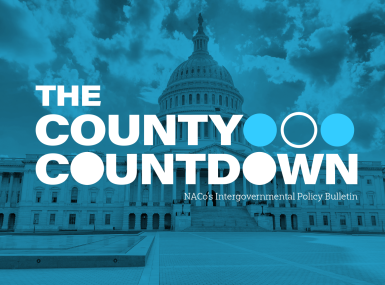Innovating to improve service for patients/inmates
Upcoming Events
Related News

I feel lucky to work every day with a team that is excited to work in what some people would imagine being the most challenging work setting ever — the county jail. Together, we manage the health care needs of a large population of men and women detained at two facilities. Doing this job well requires empathy, kindness and somedays, a lot of grit. We call the people we serve patients — not inmates — and strive to offer them high quality and timely care.
No one wants to wait a long time to get an appointment with a doctor, and this is no different for patients in our jails. A large majority of the patients we serve suffer from moderate to serious health and behavioral health issues. Waiting means their problems might get worse, which is why I was very concerned in the fall of 2019 when our wait times for non-urgent or emergent appointments spiked at our facilities.
With four unfilled positions, we were 33 percent below our ideal staffing model, which backed up our systems and contributed to an average wait time of nearly 45 days and in the worst-case scenario as long as 55 days for some patients, well above the targeted 14 days or less.
As we worked to address the staff vacancies quickly, we recognized that this wasn’t the only problem. A root cause analysis helped us to identify other major drivers to our growing problems. Putting a long list on a whiteboard, several distinct key issues stuck out: Our clinic scheduling processes, our demand into the system and inefficiencies in the flow of the medical clinic.
To improve our system, we agreed to test some new ways of doing business:
We decided to institute a practice of meeting with patients who had the longest wait times to see if their appointments were still needed. This reduced overall demand by 1.5 percent of referrals at the time of these check-ins.
We agreed that clinical staff who refer patients for medical visits check the health record to ensure that the patient had not already been referred for the same issue. This reduced additional demand coming into the staff resource-strained system.
And we instituted a practice of having our clinic schedulers “combine” referrals into one visit so that multiple referrals could be addressed in one visit for patients who had more than one referral to the clinic, and this reduced the number of times a patient had to be escorted to the clinic on separate occasions.
The cumulative impact of these changes, plus our progress in filling our staff vacancies, resulted in a significant reduction in wait times. As of this article, the average wait time for our non-urgent medical visits is 16.6 days. Our staff’s combined ingenuity has resulted in a 62 percent reduction in wait time just eight weeks after it had reached its peak.
Using collaboration, talent and knowledge present in our workgroups, we will continue improving our policies and processes to guide success in reducing those wait times even further. At Jail Health Services in King County, Wash., we are living up to the slogan pinned on our bulletin board: “We Are One Team.”
Attachments
Related News

President Trump signs Laken Riley Act into law
On January 29, President Trump signed the bipartisan Laken Riley Act into law, requiring the U.S. Department of Homeland Security to detain any undocumented immigrant who has been arrested for violent or property-related crimes and giving states new authority to sue the federal government over certain immigration-related decisions.

County Countdown – January 28, 2025
Every other week, NACo's County Countdown reviews top federal policy advocacy items with an eye towards counties and the intergovernmental partnership.

Congress reintroduces 9-1-1 SAVES Act
On January 16, the 9-1-1 Supporting Accurate Views of Emergency Services (SAVES) Act was reintroduced in the U.S. House of Representatives. This legislation aims to officially reclassify 9-1-1 dispatchers as first responders, granting these professionals the recognition they deserve for their vital contributions to public safety.